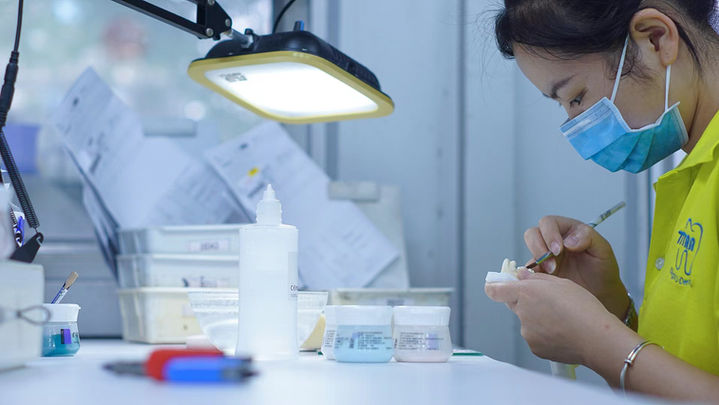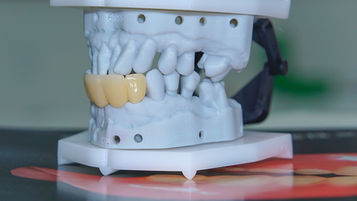Ceramic


The first generation of zirconia, which was very opaque and strong, was used only for frameworks and copings. Later, a second generation of zirconia was produced that was translucent enough to be used for monolithic posterior restorations. Because this second-generation zirconia was more translucent than framework zirconia, many companies referred to it as translucent zirconia. However, that zirconia should not be confused with the newest iteration: third-generation zirconia. Third-generation zirconia contains approximately 50% cubic phase zirconia. This is the same type of cubic zirconia that is used in the manufacturing of fake diamonds. The addition of the cubic phase material makes this anterior zirconia much more translucent and enamel-like, but slightly weaker than its predecessors.


1
Multilayer Zirconia
The advantage of third-generation zirconia is that it is available in multilayered discs. This means that the basic color gradient of the zirconia is built into the raw material. In a monolithic crown made from a previous generation zirconia, all color characterization was added onto the surface of the crown with external stains. For these crowns, if the patient had aggressive brushing habits or possessed an acidic oral environment, the external stains could be removed to reveal the monochromatic restoration. With a multilayered zirconia, even if all of the external stains are removed, the internal color gradient remains.
2
Layered Zirconia
Layered zirconia restorations combine both the highest esthetics and the strength and flexibility you need for all posterior and anterior cases. The zirconia substructure typically has a flexural strength of 1200 MPa, comparing favorably to traditional porcelain fused to metal crowns. Additionally, extensive laboratory testing has shown the fracture toughness and flexural strength of zirconia are significantly higher than that of alumina or any other all-ceramic materials.
3
Full Zirconia
Full-contoured zirconia crowns and bridges are great options for posterior restorations. These prosthetics are fabricated and designed with CAD/CAM technology for a precise fit and don’t have a porcelain overlay. It is an esthetic alternative to PFM metal occlusal/lingual or full-cast restorations.
4
e.max
e.max is a unique lithium disilicate ceramic restorative material that delivers both superior strength and lifelike esthetics. It can be stained or layered to achieve virtually perfect contacts and occlusion. This lithium disilicate ceramic can be milled from pre-manufactured blocks or it can be pressed from a pre-manufactured ingot. e.max offers beautiful esthetics and an unmatched strength of 400 MPa, making it ideal for crowns anywhere in the mouth.









